10 rules of exercising

The importance of exercising cannot be stressed enough. But do you know that things that could go wrong if you don’t know the basic rules.
A little detail like bending your knee could make all the difference between a healthy workout and a severe injury.
Read on to know about the basic rules of exercising.
Rule 1: Warm up

Image: Jogging is the best warm up exercise.
Before starting the actual exercise, it is important to ‘warm up’, i.e. loosen up the muscles to avoid getting a sudden jolt that could cause injury.
It could be jogging slowly, bending and flexing joints or jumping on the spot. Give yourself at least five minutes and focus on movements that match your workout.
Rule 2: Stretch
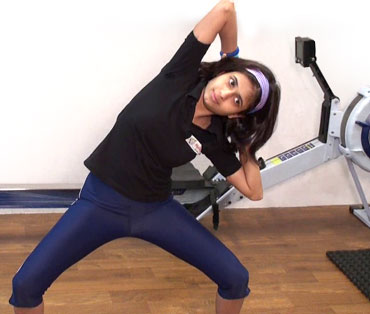
Image: Stretch before you begin your workout as well as after.
Stretching and warm up are generally mutually inclusive. Stretching loosens muscles; it also doesn’t allow tension build up, which reduces the chances of an injury considerably.
Stretching also helps with relieving the pain that is often felt after an intense workout. So stretch before you begin your workout as well as after.
Rule 3: Build intensity gradually
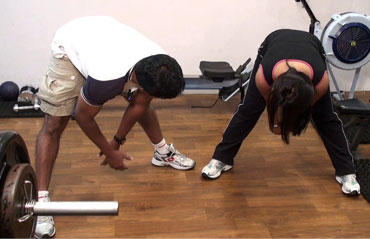
Image: Start your workout slowly and increase the intensity of the exercise step by step.
Your trainer at the gym will give you a specific workout plan, based on your body type and needs. But it is always wise to start your workout slowly and increase the intensity of the exercise step by step.
This will help you from getting overwhelmed at the start, a deterrent in letting you exercising further, and may even help prevent injury.
Rule 4: Pay attention to posture

Image: The correct posture is very important
A wrong posture is how most people end up with exercise related injuries. For instance, check whether your knees are supposed to be bent at a right angle tor lower. Wrong posture while weight training, could injure your back.
So keep details in mind and don’t exercise without paying attention to your posture. You must take help from a professional trainer when you start.
Rule 5: Breathe

Image: Deep breathing ensures sufficient oxygen supply which in turn increases blood circulation.
Concentrate on your breathing. Whether you’re doing the treadmill or weights, make sure you breathe deeply and regularly. Deep breathing ensures sufficient oxygen supply which in turn increases blood circulation.
If you exercise in the gym daily, try going for a walk outdoors, once or twice in a week. Besides the change, it will refresh and calm you.
Rule 6: Never workout after a meal
Don’t exercise immediately after a meal. Keep a margin of at least two hours after you’ve eaten. Don’t eat immediately after your workout, too. Take rest for, at least, 15-20 minutes.
What you eat after your work is also important because your body is bound to absorb nutrients from the food rapidly. So it helps to ensure that it is something nutritive.
Rule 7: Vary your exercises
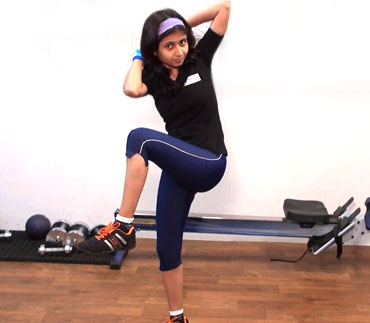
Image: Keep changing your exercise routines every four weeks.
Keep changing your exercise routines every four weeks. The human body is made in a way that it gets used to any kind of exertion.
And once the body gets used to a routine it may not give the same results. Varying your workout occasionally will also motivate you to keep exercising.
Rule 8: Listen to your body
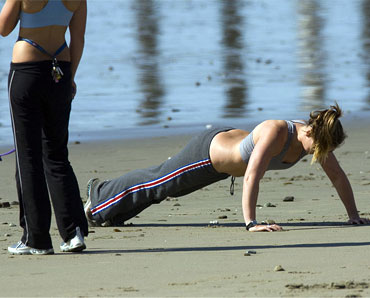
Image: Pay attention to your body while exercising.
Pay attention to your body while exercising. Make sure the muscles you’re targeting are actually getting worked. However, if you feel any sudden or sharp pain during exercise, stop immediately.
It could be a muscle pull or tear, or something more serious. Continuing to exercise might aggravate the situation. Consult your trainer or physiotherapist when you experience pain.
Rule 9: Cool down
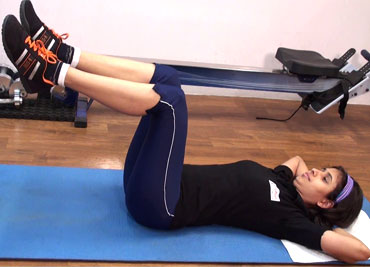
Image: Allow yourself a cool down period after you finish an intensive work out.
Allow yourself a cool down period after you finish an intensive work out. Don’t just stop exercising abruptly because that can again lead to injuries.
Phase it out eventually and end with a walk and some basic stretches to loosen your contracted muscles.
Rule 10: Track your progress

Image: Record the frequency, intensity, time and type of exercise you are doing.
Continue tracking your progress. Record the frequency, intensity, time and type of exercise you are doing. It will give you give an idea of progress in terms of weight loss, flexibility and energy levels.
When you start to see progress, it will instantly act as a great motivating factor for you to continue exercising.
Source :



